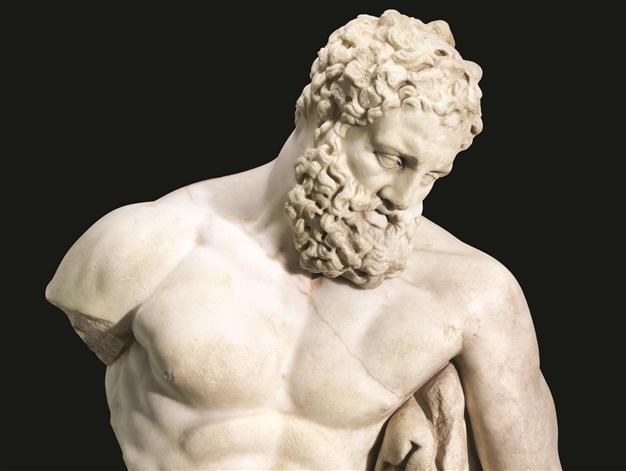Turkey repeats call for return of artifacts
ANKARA

The top half of the Roman sculpture “Weary Herakles,” meanwhile, was returned to Turkey last September after Turkish officials convinced the Boston Museum.
Culture Minister Ertuğrul Günay has reiterated
Turkey’s desire to repatriate cultural
artifacts taken from the country, noting that it could consider measures against foreign institutions that are unwilling to send back archaeological pieces.
The Turkish government has threatened to halt all loans of art to the J. Paul Getty Museum in California, the Metropolitan Museum of Art in New York, the Cleveland Museum of Art and Harvard University’s Dumbarton Oaks Research Library and Collection until they respond to Ankara’s allegations that some of their collection was illegally looted from Turkish archaeological sites, the Los Angeles Times reported July 21.
The Culture Ministry recently managed to repatriate “Weary Herakles” from the United States and the Hattuşa Sphinx from Germany following long-running negotiations.
Defending the ministry’s call for the repatriation of artifacts, Günay said: “They call me a nationalist and a chauvinist. It is not true, I have never had such tendencies. I am a man of universalism, but the artifacts from our lands belong to us. So, it is not a nationalist approach but a universal one. Our struggle created an impression in the world. In the countries I visit, culture ministers support us, and they are ready for cooperation.”
Countries in Eastern Europe have a particularly sincere dialogue with Turkey on the issue, he said, adding that UNESCO was also supporting Turkey’s struggle.
The Hattuşa Sphinx was put back on display in the northern province of Çorum in November 2011 for the first time in 100 years after Turkish officials successfully convinced the Berlin Pergamon Museum to return the object.
More than 3,000 years old“This sphinx is more than 3,000 years old, and it is very important to have it in Turkey again,” Günay said when the sphinx was put back on display at Çorum’s Boğazköy Museum last year after being taken to Germany for “restoration” nearly a century ago.
The top half of the 1,800-year-old Roman sculpture “Weary Herakles,” meanwhile, was returned to Turkey last September after Turkish officials convinced the Boston Museum to return the artifact. The bottom half of the statue was discovered in 1980 by Professor Jale İnan in Perge, a few years after the top half was smuggled out of the country. “[There have been] 40 years of longing between the top and lower half of the statue,” Günay said. Together, the two halves weigh 200 kilograms.
archeology,
